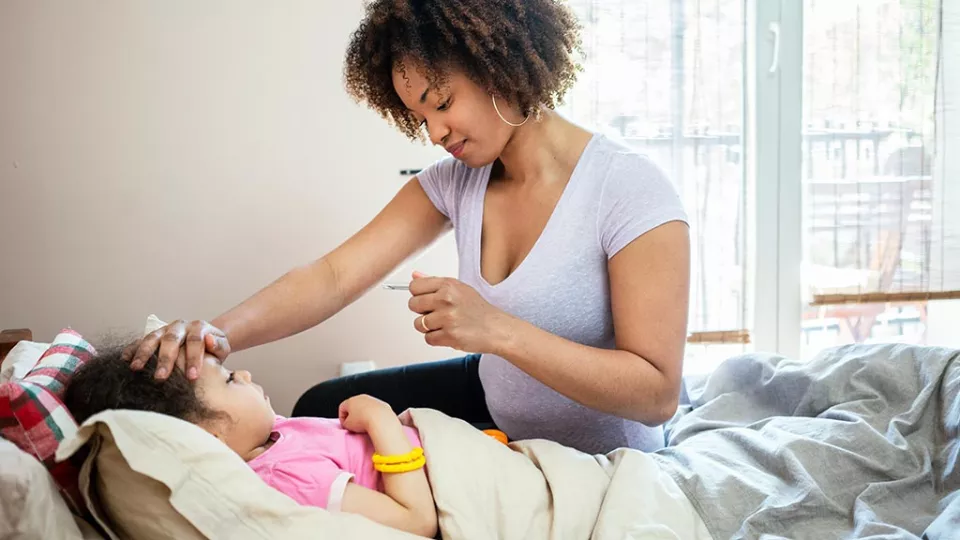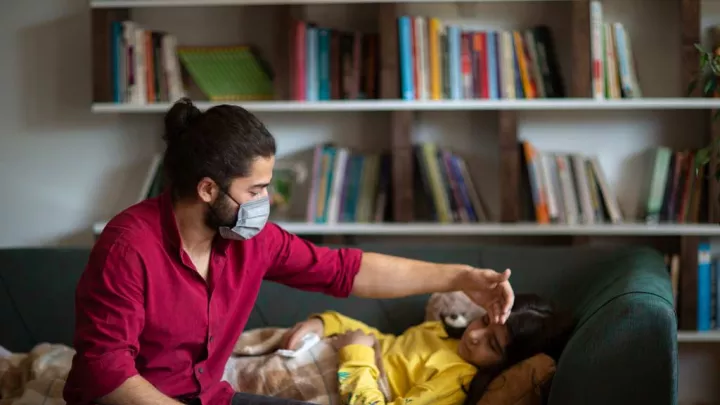
What Are Febrile Seizures?
When a child has a fever, their body can ache, they are restless and they just don’t feel well. While a fever is a part of our natural response to infection, the fever itself can lead to complications. One rare complication is a febrile seizure.
A febrile seizure is when your child (ages 6 months to 6 years of age) experiences convulsions that occur in the setting of a fever. As a father, I can’t imagine too many things more distressing than seeing my already-ill child suffer through a seizure; but as a pediatric neurologist, I recognize that febrile seizures are usually not life threatening. During a febrile seizure, a child may:
- Lose consciousness
- Experience body stiffness
- Have full-body shaking
A seizure lasts only a minute or two, but can go on longer. Febrile seizures rarely require medication. The majority of the cases we see at Children’s Hospital Los Angeles do not require hospital admission.
What to do if your child has a seizure
If a child has any type of seizure, it is important to stay calm and follow these four steps:
- Place the child on their side to prevent choking. There is no need to restrain the child or try to stop the shaking; the seizure will run its course on its own.
- Never put anything in the child’s mouth. This can lead to chipped teeth, damaged gums or even a blocked airway.
- Time the seizure. If it lasts more than five minutes, call 911. Medication may be needed to end the seizure.
- Have your child evaluated the same day. While brief seizures don’t require emergency services, the evaluation is mainly to check for the cause of your child’s fever.
Facts about febrile seizures
- The majority of seizures occur between 12 and 18 months of age.
- They are the most common type of childhood seizure, affecting 2 to 5% of children.
- Though the exact reason a fever can cause a seizure in this age group is not fully understood, genetic predisposition is a factor.
- Children who have a febrile seizure do not have epilepsy. That diagnosis requires the presence of two or more seizures that were not caused by a fever.
- Seizures due to an infection of the brain and its protective lining (meninges) or seizures associated with metabolic problems are not febrile seizures.
Two categories of febrile seizures
Febrile seizures are divided into two categories:
- Simple: These types of seizures are more common. They involve full-body shaking and last less than 15 minutes. Studies show that simple febrile seizures do not affect future school performance or intelligence.
- Complex: A febrile seizure is considered complex if it affects only a part of the body, lasts longer than 15 minutes or recurs within 24 hours. Complex febrile seizures have a slightly higher rate of future complications.
Is there a connection between epilepsy and febrile seizures?
The chances of epilepsy developing in a healthy, developmentally typical child who has a simple febrile seizure are estimated to be 2 to 4%, while the rate in the general population is about 1 to 2%. Although febrile seizures are scary, they are usually not associated with significant health problems. Short febrile seizures do not cause brain damage.
Follow-up care after a seizure
Treatment of febrile seizures is usually limited to fever-lowering agents such as acetaminophen or ibuprofen. These will not decrease the chance of having another febrile seizure, but will make your child more comfortable. Daily anti-seizure drugs are not recommended.
Even though your child will be evaluated on the day of their seizure, certain situations require further diagnostic testing.
- If your child experiences a simple febrile seizure, he or she may not need to be hospitalized once the fever evaluation is complete. Blood and urine tests are only performed if needed to evaluate the fever.
- If your child has a prolonged febrile seizure, they’ll be given medication to use only if they have another long seizure.
If your child has a febrile seizure, make sure he or she sees your pediatrician or an emergency department physician as soon as possible. While simple febrile seizures are not harmful, a physician needs to make sure they are not a symptom of a more serious illness. Talk with your pediatrician to determine if a consultation with a pediatric neurology specialist is appropriate for your child.
How likely is it for a febrile seizure to happen again?
The risk of recurrence varies with age. Below the age of 1, the risk is around 50%, while older children have a risk of about 20%. The overall risk of recurrence is about 30 to35%. Other risk factors include certain genetic syndromes that can put a child at higher risk for febrile seizures or a family history of epilepsy.
Could siblings be affected and experience a seizure, too?
There is a genetic predisposition to febrile seizures, but the exact mode of inheritance is not known. About 10 to 20% of the time, children who have had a febrile seizure have a first degree relative, such as a sibling or parent, who has also had, or will have, one. Additionally, identical twins have a higher rate than fraternal twins.


